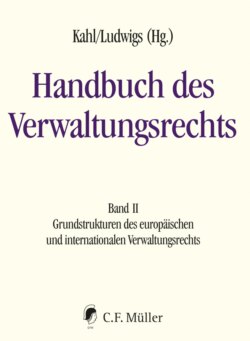| 1. | The aim of the European integration process is to create an ever closer union among the peoples of Europe. European administrative law can serve as an example of this process (par. 1–3). |
| 2. | In the first thirty years, the ECJ in particular decisively shaped the character of the European Economic Community (EEC) as a supranational community of law. The Court developed basic constitutional requirements for administrative action. Comitology, as a means of coping with the dualism between Community interests and Member State interests, and agencies, as a means of exchanging information, coordinating Member State policies in specific areas and providing the Commission with a basis for decision-making, are tested and have proven their worth. The first forms of administrative cooperation are emerging (par. 4–27). |
| 3. | As part of the single market initiative, the EEC enacts a large amount of innovative legislation in the fields of public procurement, product safety, telecommunications, and, in particular, environmental protection. In addition to emerging structural fund support, the first legal bases for transnational administrative acts have been adopted (par. 28–40). |
| 4. | The Treaty of Maastricht represents a substantial deepening of integration, not only in terms of monetary union but also regarding a union of values. At the same time, the Member States are making their reservations about sovereignty clear by explicitly formulating the limits on EC competences and emphasising their national identity. Migration, with its attendant security problems, is becoming a relevant policy area. Transnational administrative enforcement is becoming increasingly important. In environmental law, the cross-media approach is gaining ground, and the EC is testing new soft management methods, particularly in the area of economic policy (par. 41–54). |
| 5. | In the ten years between Amsterdam/Nice and Lisbon, the Union’s legal order was subject to a constant process of reform. For example, the budgetary law and structural fund support were amended, anti-trust control was transformed into an enforcement network, the regulation of the telecommunications markets was consolidated, the energy markets were liberalised, and public procurement law was reformed. In environmental legislation, the Water Framework Directive and the Emission Allowances Directive implemented new approaches. Immigration and asylum law continued to gain importance, and the Services Directive challenged national administrative law. The large number of agencies founded, some of which institutionalised previously existing informal cooperation, illustrate that EU tasks expanded significantly, reaching into all areas of life (par. 55–82). |
| 6. | The Treaty of Lisbon made the administration more visible as a function in primary law. There is now a legal basis and scientific preparatory work for a codification of EU administrative law. The financial crisis and migration as central challenges have led to the establishment of new agencies and the extension of the tasks of existing ones. In other central areas, there is ongoing reform, for example in budgetary law, structural funds law, migration law, state aid, and data protection law (par. 83–100). |
| 7. | The development of the European association of administrations is characterised by a steady expansion of the Union’s competences, so that the initially envisioned Common Market has now developed into a shared space, in which administrations’ vertical and horizontal interdependence has reached an intensity that calls for special legitimation arrangements. The struggle to reconcile the interests between Member States and the Union, between the Union bodies, and between the Member States generates lasting dynamic development. In view of the challenges the EU faces, there is no alternative to realising a democratic European Union based on the rule of law. This remains a necessary and worthwhile ongoing task (par. 101–113). |
